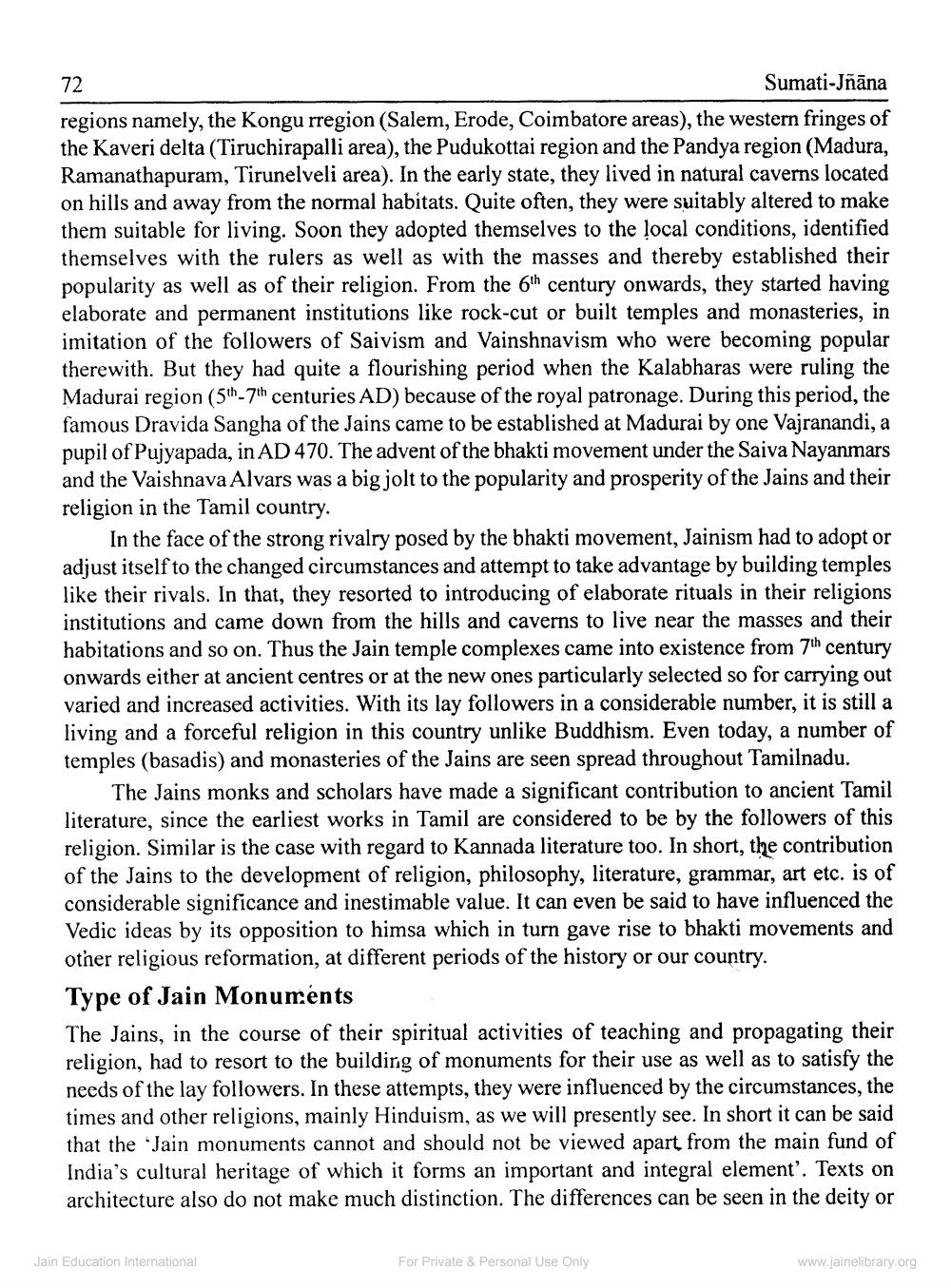________________
72
Sumati-Jñāna
regions namely, the Kongu rregion (Salem, Erode, Coimbatore areas), the western fringes of the Kaveri delta (Tiruchirapalli area), the Pudukottai region and the Pandya region (Madura, Ramanathapuram, Tirunelveli area). In the early state, they lived in natural caverns located on hills and away from the normal habitats. Quite often, they were suitably altered to make them suitable for living. Soon they adopted themselves to the local conditions, identified themselves with the rulers as well as with the masses and thereby established their popularity as well as of their religion. From the 6th century onwards, they started having elaborate and permanent institutions like rock-cut or built temples and monasteries, in imitation of the followers of Saivism and Vainshnavism who were becoming popular therewith. But they had quite a flourishing period when the Kalabharas were ruling the Madurai region (5th-7th centuries AD) because of the royal patronage. During this period, the famous Dravida Sangha of the Jains came to be established at Madurai by one Vajranandi, a pupil of Pujyapada, in AD 470. The advent of the bhakti movement under the Saiva Nayanmars and the Vaishnava Alvars was a big jolt to the popularity and prosperity of the Jains and their religion in the Tamil country.
In the face of the strong rivalry posed by the bhakti movement, Jainism had to adopt or adjust itself to the changed circumstances and attempt to take advantage by building temples like their rivals. In that, they resorted to introducing of elaborate rituals in their religions institutions and came down from the hills and caverns to live near the masses and their habitations and so on. Thus the Jain temple complexes came into existence from 7th century onwards either at ancient centres or at the new ones particularly selected so for carrying out varied and increased activities. With its lay followers in a considerable number, it is still a living and a forceful religion in this country unlike Buddhism. Even today, a number of temples (basadis) and monasteries of the Jains are seen spread throughout Tamilnadu.
The Jains monks and scholars have made a significant contribution to ancient Tamil literature, since the earliest works in Tamil are considered to be by the followers of this religion. Similar is the case with regard to Kannada literature too. In short, the contribution of the Jains to the development of religion, philosophy, literature, grammar, art etc. is of considerable significance and inestimable value. It can even be said to have influenced the Vedic ideas by its opposition to himsa which in turn gave rise to bhakti movements and other religious reformation, at different periods of the history or our country. Type of Jain Monuments The Jains, in the course of their spiritual activities of teaching and propagating their religion, had to resort to the building of monuments for their use as well as to satisfy the needs of the lay followers. In these attempts, they were influenced by the circumstances, the times and other religions, mainly Hinduism, as we will presently see. In short it can be said that the 'Jain monuments cannot and should not be viewed apart from the main fund of India's cultural heritage of which it forms an important and integral element'. Texts on architecture also do not make much distinction. The differences can be seen in the deity or
Jain Education International
For Private & Personal Use Only
www.jainelibrary.org




